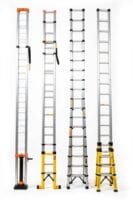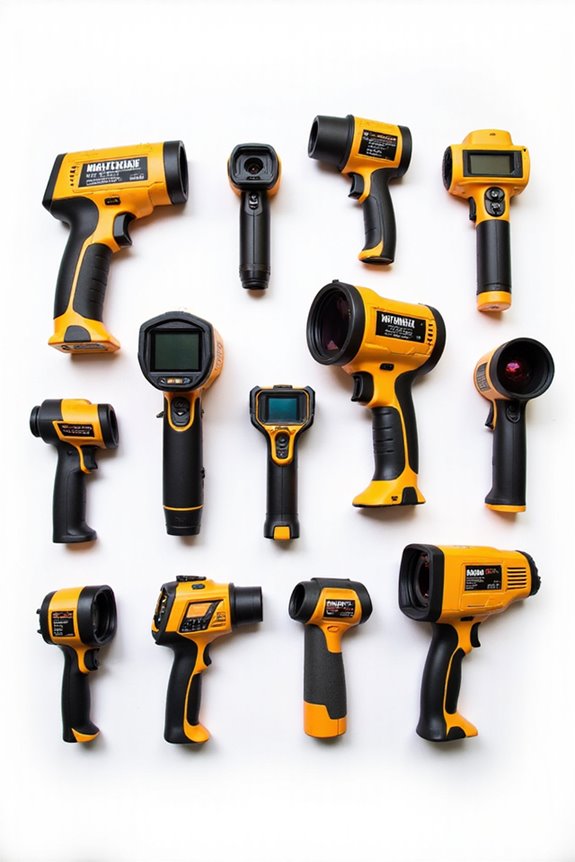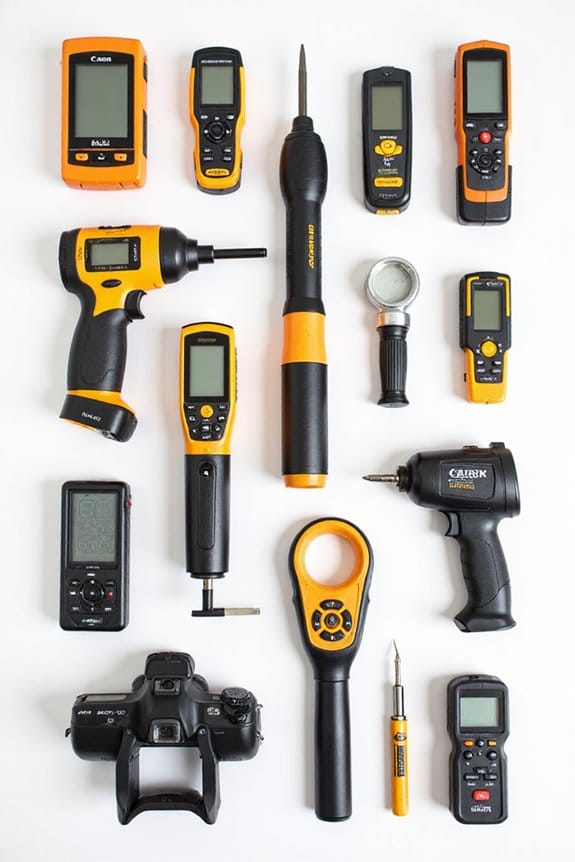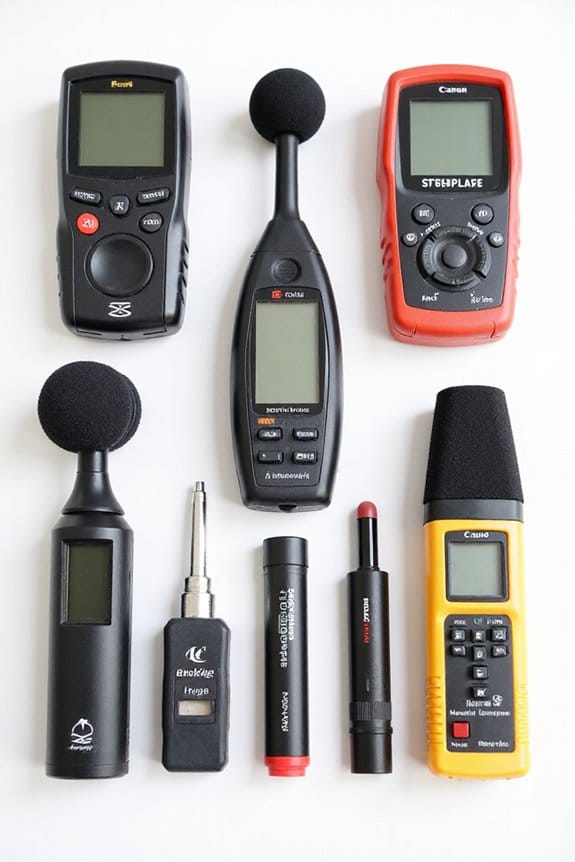As an Amazon Associate, we earn from qualifying purchases. Some links may be affiliate links at no extra cost to you. Although our opinions are based on curated research, we haven't used these products. Articles generated with AI.
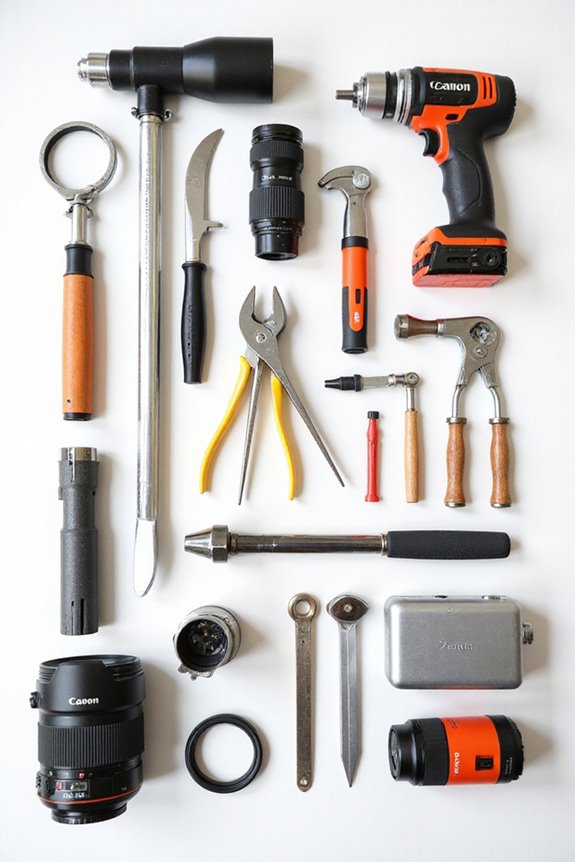
3 Best Practices for Inspecting Your HVAC System Like a Pro
Inspecting your HVAC system like a pro starts with these three best practices. First, always wear proper PPE—gloves and masks to dodge mold and dust. Second, invest in a reliable mold test kit for quick results on air quality. Finally, keep your condensate traps clean to prevent clogs. Remember, regular maintenance is your friend! Stick around, and you’ll discover even more tips to guarantee your HVAC runs smoothly and efficiently.
Key Takeaways
- Always turn off power before inspections to ensure safety and prevent electrical hazards.
- Use appropriate PPE, including gloves and masks, to protect against contaminants and mold spores.
- Regularly check and clean condensate drains to prevent clogs, mold growth, and potential water damage.
- Utilize the right tools, like a digital manifold gauge set, for accurate pressure testing and leak detection.
- Ensure proper ventilation during inspections to enhance air quality and reduce harmful particles in the environment.
Mold Test Kit for Home – 7 Simple Detection Tests
Mold Test Kit for Home,7 Simple Detection Tests,Test HVAC System,Home Surfaces, Indoor Air Quality...
- 7 Complete Mold Testing Kit - This DIY home mold test kit includes 7 individual tests, allowing you to conduct thorough and extensive mold assessments throughout your...
- Three Testing Methods for Comprehensive Analysis - It tests for a variety of molds, including common household varieties. Test room air, HVAC systems, and any household...
- Fast and Reliable Mold Detection - This mold test kit for home includes a mold identification guide, delivering quick and reliable results. Easily identify and understand...
When it comes to keeping your home safe and healthy, have you considered how effective a Mold Test Kit for Home could be? This kit includes seven simple tests, letting you check air quality and surfaces like walls and showers. Here’s what you get:
- Comprehensive Testing: Test various areas and HVAC systems for mold presence.
- Fast Results: You’ll see results in just 2-4 days.
- User-Friendly: Clear instructions make it easy, even if you’ve never tested for mold before.
- Health Benefits: Perfect for families with asthma or allergies.
Investing in this kit keeps your home safe and saves you money!
Best For: Families with health concerns or anyone wanting to ensure a safe indoor environment.
Pros:
- Comprehensive Testing: Includes multiple tests for various surfaces and air quality.
- Fast Results: Provides results within 2-4 days for quick assessment.
- User-Friendly: Simple instructions make it accessible for beginners.
Cons:
- No Immediate Results: Results take a few days, which may delay immediate action.
- Limited to DIY Testing: Requires users to perform tests themselves, which may be challenging for some.
- Free Lab Analysis Optional: Professional evaluation of mold photos might not be as thorough as in-person inspections.
3/4 -inch Standard Condensate Trap for HVAC Systems
Sale
DECOAIRCON 3/4 -inch Standard Condensate Trap with Cleaning Brush, PVC U Trap for HVAC Systems, Air...
- The standard condensate trap adopts a gradient design to effectively drains condensate in a variety of HVAC systems and easily fit 3/4" pipe, perfect replacement for old...
- This condensate trap is made of quality PVC material, which is durable; and the 3/4 inch PVC drain line is work well and suitable for your central air conditioning,...
- DECOAIRCON condensation trap has a clear U bend to clearly see if it’s clogged or working,stopping the back flow of condensed water, so that the water can be drained...
For homeowners looking to maintain their HVAC systems, the 3/4-inch Standard Condensate Trap is a must-have. Here’s why:
- Durable Design: Made from quality PVC, it fits seamlessly into various HVAC setups, draining condensate effectively.
- Visibility: The clear U-bend lets you spot clogs before they become a headache.
- Easy Cleaning: An 18-inch flexible brush is included for quick maintenance, keeping sediment buildup at bay.
- Simple Installation: You can easily swap it out with basic tools—no advanced skills required.
With proper sealing and regular check-ups, you’ll prevent unwanted leaks and enjoy smooth HVAC operation!
Best For: Homeowners seeking an effective and low-maintenance solution for their HVAC condensate drainage needs.
Pros:
- Effective in preventing overflow and gurgling noises from drains.
- Easy installation process, suitable for DIY enthusiasts.
- Clear design allows for easy visual inspection and maintenance.
Cons:
- Some users reported leaks, requiring careful sealing with PVC glue.
- Potential quality control issues with sealing problems on caps.
- Regular maintenance is necessary to ensure optimal performance.
Digital Gauges HVAC Manifold Gauge Set for 22 Refrigerants
Sale
WISSCOOL Digital Gauges HVAC, R12,R22,R134A,R410,R502,R1234y Vacuum Pressure Manifold Gauge Set with...
- Multi-Functional Digital Gauge: WISSCOOL digital manifold gauge combines three functions-Refrigerant filling pressure inspection, Vacuum pressure test and Leak detection....
- Various Refrigerants Compatibility: The AC gauge with built-in database of 22 refrigerants NIST. Includes the normal types like...
- Precision Acquisition: The gauge has 32-bit digital processing unit and high precision data acquisition unit make instrument reliable and efficient.Pressure testing...
If you’re a homeowner or HVAC technician looking to streamline your system inspections, the WISSCOOL digital manifold gauge set is a must-have tool. Here’s why:
- Versatile Functionality: It combines refrigerant filling, vacuum pressure testing, and leak detection in one device. No need to switch between tools!
- Wide Refrigerant Compatibility: With support for 22 refrigerants, including R410A and R134A, it fits both residential and commercial needs.
- Precision Performance: A 32-bit processor guarantees accurate pressure readings and vacuum measurements.
- User-Friendly Design: The large LCD display is easy to read, even in low light. Plus, it’s lightweight—who doesn’t love that?
This gauge set can truly elevate your HVAC inspections!
Best For: Homeowners and HVAC technicians seeking a reliable and versatile tool for comprehensive system inspections and diagnostics.
Pros:
- Versatile functionality allows for refrigerant filling, vacuum testing, and leak detection in one device.
- Wide refrigerant compatibility supports 22 different refrigerants, making it suitable for various residential and commercial applications.
- User-friendly design features a large, backlit LCD display for easy reading and a lightweight build for convenient handling.
Cons:
- Some users may experience a learning curve when first using the gauge set.
- Occasional issues with pressure readings and leaks have been reported by a few users.
- Although designed for ease of use, new users might find certain features initially confusing.
Factors to Consider When Choosing to Inspect HVAC System

When you’re ready to inspect your HVAC system, there are several key factors to evaluate. First, think about system compatibility and efficiency—after all, you don’t want to bring a butter knife to a gunfight! Next, weigh the tools and equipment you’ll need, and decide if you’re tackling this as a DIY project or calling in the pros.
System Compatibility and Efficiency
Choosing to inspect your HVAC system isn’t just about checking off a box; it’s about guaranteeing your comfort and efficiency year-round. Here are some key factors to reflect on:
- Component Compatibility: Make certain parts like condensate traps and gauges match your system’s size and type. Mismatched components can lead to performance issues.
- Efficiency Ratings: Look for higher-rated systems. They not only perform better but also save you money on energy bills.
- Refrigerant Type: Using the correct refrigerant is essential. It guarantees peak cooling and heating, preventing potential damage.
- Installation and Maintenance: Proper installation and regular upkeep are important for efficiency.
- Pressure Testing: Understand how to test system pressure for accurate diagnostics. This can boost your HVAC’s lifespan and reliability.
Required Tools and Equipment
To guarantee your HVAC system runs smoothly, having the right tools and equipment on hand is a game changer. Here’s what you’ll need:
- Digital Manifold Gauge Set: This lets you accurately perform pressure and vacuum tests with multiple refrigerants.
- 3/4-Inch Standard Condensate Trap: Essential for preventing water damage and ensuring efficient drainage.
- Hand Tools: Screwdrivers, wrenches, and pliers are a must for accessing and repairing different parts.
- Multimeter: Perfect for diagnosing electrical issues by measuring voltage, current, and resistance.
- Personal Protective Equipment (PPE): Don’t forget gloves and goggles to keep you safe from chemicals or other hazards.
With these tools, you’ll be inspecting like a pro in no time!
Maintenance and Cleaning Needs
Maintaining your HVAC system isn’t just about fixing things when they break; it’s also about staying ahead of potential problems. Here are some cleaning needs to take into account:
- Regular Checkups: Schedule maintenance checks to catch issues early. It saves you from unexpected breakdowns and extends your system’s life.
- Clear Condensate Traps: Keep these clean to prevent clogs. Clogs can lead to water damage and mold—yikes!
- Use the Right Tools: Invest in HVAC cleaning brushes to remove debris efficiently. Good airflow means better performance.
- Consistent Cleaning Routine: A routine not only boosts efficiency but also improves indoor air quality.
Professional vs. DIY Options
After keeping your HVAC system clean and well-maintained, the next big question is whether to tackle inspections yourself or call in a pro. Here are some factors to contemplate:
- Expertise: Pros have tools and skills to diagnose issues like refrigerant leaks that you might miss.
- Cost: DIY methods can save you money on basic checks, but think about potential repair costs if you overlook something.
- Compliance: Professionals guarantee you meet local building codes, keeping you safe and avoiding future headaches.
- Knowledge: DIY inspections help you learn your system better, which can be empowering.
Ultimately, weigh your ability and comfort level against the risk of missing vital details. Sometimes, a pro is worth the investment!
Safety Considerations and Protocols
When it comes to inspecting your HVAC system, safety should always be your top priority. Here are some essential safety considerations:
- Turn Off Power: Always switch off the power to avoid electrical hazards. Seriously, no one wants an unexpected zap!
- Wear PPE: Use gloves and masks to guard against mold spores and contaminants. Better safe than sorry, right?
- Follow Guidelines: Stick to manufacturer instructions and industry standards for thorough evaluations. Trust me, it pays off.
- Check Drains: Regularly inspect condensate drains to prevent water damage and mold growth. Stagnant water is a no-go.
- Ventilate: Keep proper ventilation during inspections to reduce harmful particles and improve visibility. A little fresh air goes a long way!
Stay safe out there!
Frequently Asked Questions
How Often Should I Inspect My HVAC System?
You should inspect your HVAC system at least twice a year. Here’s a quick guide:
- Spring Check-Up: Before summer hits, make sure everything’s running smoothly.
- Fall Review: Get it ready for winter; you don’t want a chilly surprise!
Also, don’t forget to change filters every 1-3 months. If you notice weird noises or smells, investigate sooner. Regular checks keep your system efficient and save you money. Trust me, you’ll be glad you did!
What Tools Do I Need for HVAC Inspection?
Did you know that nearly 50% of HVAC issues stem from poor maintenance? To inspect your system like a pro, grab these tools:
- Thermometer – Check temperature differentials.
- Multimeter – Test electrical components.
- Flashlight – Illuminate dark corners.
- Vacuum – Clear dust and debris.
- Manifold Gauge Set – Measure refrigerant pressures.
With these tools in hand, you’ll tackle inspections efficiently and maybe even impress a neighbor or two!
Can I Perform HVAC Inspections Myself?
Yes, you can perform HVAC inspections yourself! Here’s a quick guide to help you out:
- Visual Check: Look for obvious signs of wear, like rust or leaks.
- Air Filter: Replace it if it’s dirty; it’ll improve efficiency.
- Thermostat: Test it to verify it’s working properly.
- Ducts: Check for blockages or damage.
Just remember, some things are better left to professionals, especially if you’re unsure. Happy inspecting!
What Are Signs of an HVAC System in Need of Inspection?
Noticing signs your HVAC system needs inspection is like spotting a leaky faucet—if you ignore it, things can get worse! Here are some signs to watch for:
- Strange Noises: If you hear clanking or buzzing, it’s time to check.
- Unusual Smells: A burning or musty odor isn’t normal.
- Inconsistent Temperatures: If some rooms are too hot or cold, your system might need help.
Don’t wait; it’s better to act early!
How Much Does a Professional HVAC Inspection Cost?
A professional HVAC inspection usually costs between $75 and $200. Factors like your location and the complexity of your system can affect the price. Here’s a quick breakdown:
- Basic Inspection: $75-$100 – Great for routine checks.
- Comprehensive Inspection: $150-$200 – Covers everything in detail.
Don’t skip this! Investing in an inspection can save you money on repairs later. Plus, you’ll breathe easier knowing your system’s in top shape!



